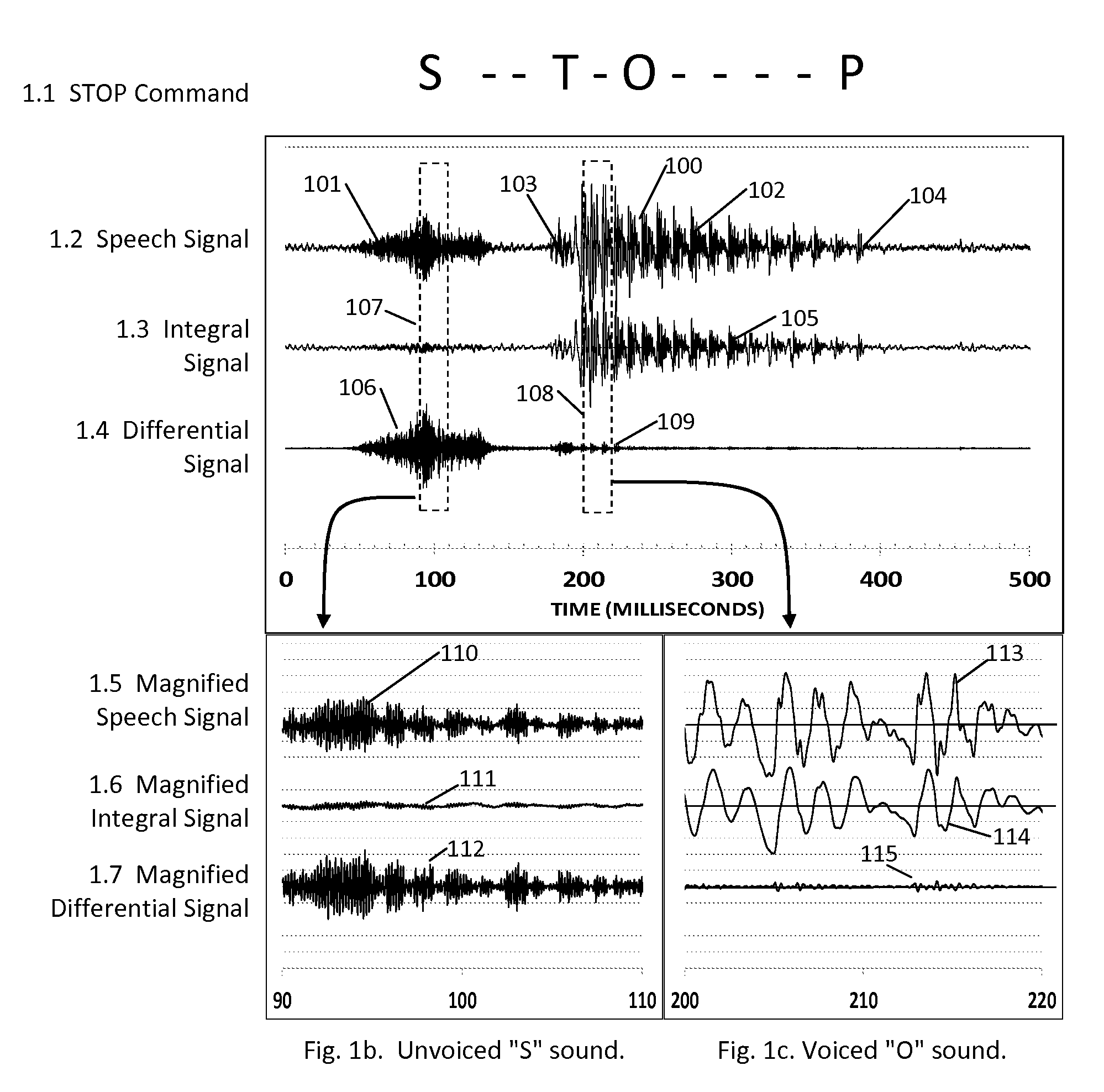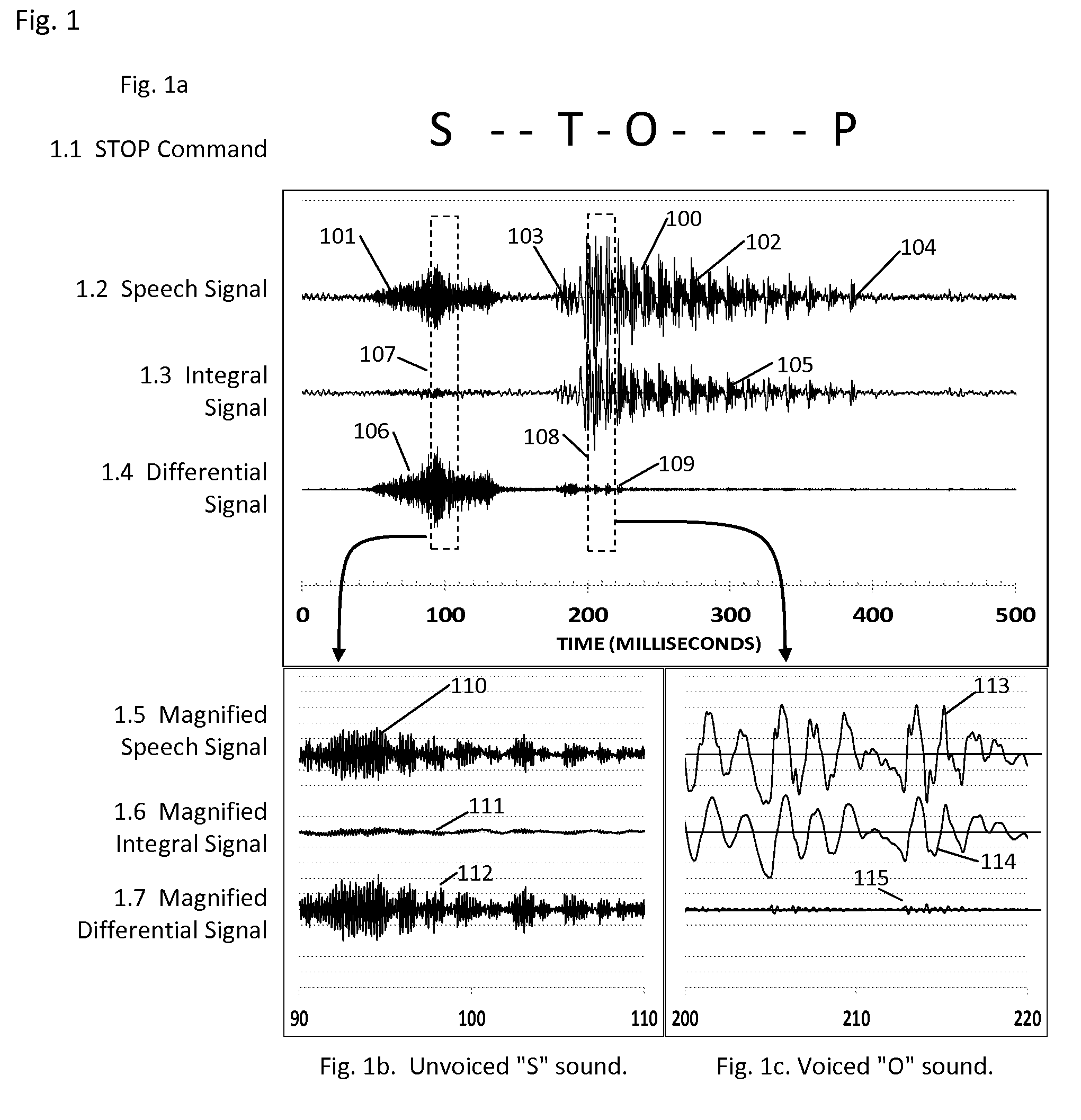Efficient Discrimination of Voiced and Unvoiced Sounds
- Summary
- Abstract
- Description
- Claims
- Application Information
AI Technical Summary
Benefits of technology
Problems solved by technology
Method used
Image
Examples
first discrimination experiment
[0106]An experiment was performed to check that the integral and differential signals correctly select the voiced and unvoiced sounds. Certain test commands were spoken into a mobile phone, which was programmed to use the inventive method to identify the voiced and unvoiced sounds. The mobile phone was an LG Optimus G with Tdata=0.045 milliseconds. This is in the preferred range of Tdata according to FIG. 7, hence no further adjustment of the data rate was needed. The phone was programmed to derive the integral signal as specified in FIG. 2, and the differential signal as described in FIG. 3, and then to determine the maximum values of the integral and differential signals for each command sound. Certain command sounds were then uttered about 100 times. Each command sound was then analyzed to determine the maximum value of the rectified integral signal, and the maximum value of the rectified differential signal. A point was then plotted on the chart, at an X-Y location corresponding...
second discrimination experiment
[0270]A second experiment was carried out, similar to that of FIG. 8, to test the inventive method, but this time using the tally protocol to discriminate voiced and unvoiced sounds. The procedure was the same as that for the experiment of FIG. 8, but here the measured parameters were the maximum values of the voiced and unvoiced tally counters, instead of the maximum values of the integral and differential signals. The command sounds again comprised a voiced command “GO”, an unvoiced sound “SS”, a “STOP” command with both voiced and unvoiced sound, and a Background condition comprising a 10-second period of ordinary office noise but with no command spoken. The background noise included fans, a ventilator, external traffic noises, civilized music, and occasional speech in an adjacent room, as described previously. Each trial condition was repeated about 100 times. The graph of FIG. 26 shows the maximum value of the voiced and unvoiced tally counters recorded during the test sounds. ...
PUM
 Login to View More
Login to View More Abstract
Description
Claims
Application Information
 Login to View More
Login to View More - R&D
- Intellectual Property
- Life Sciences
- Materials
- Tech Scout
- Unparalleled Data Quality
- Higher Quality Content
- 60% Fewer Hallucinations
Browse by: Latest US Patents, China's latest patents, Technical Efficacy Thesaurus, Application Domain, Technology Topic, Popular Technical Reports.
© 2025 PatSnap. All rights reserved.Legal|Privacy policy|Modern Slavery Act Transparency Statement|Sitemap|About US| Contact US: help@patsnap.com



